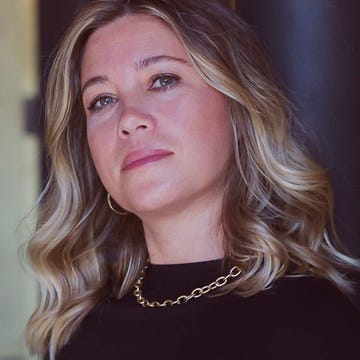Journalist Evan Rail’s fascinating literary true-crime tale The Absinthe Forger: A True Story of Deception, Betrayal, and the World’s Most Dangerous Spirit draws readers into an exclusive circle of absinthe collectors who are particularly interested in “pre-bans,” bottles from more than a century ago, when the green fairy was first outlawed in many Western countries. Within this passionate milieu, a charismatic man Rail calls Christian was known for his “exceptional palate.” He could “read and interpret a liquid just like some people read books,” the journalist explains in a book that gracefully blends cultural history and present-day observations with a detective story. Rail goes on to tell readers that when Christian first tasted pre-ban absinthe, he felt “he had found the thing in itself, the sense of the authentic and true.” And when he first counterfeited the spirit, he did so merely to see if he could.
“Beyond the frisson of their time-shifting possibilities, the old absinthes simply tasted different—oxidized a bit, of course, hinting of old cardboard or a hot, stuffy room, but shifted along the flavor spectrum in other ways, too,” Rail writes. He speaks to me over Zoom from his family’s home in Prague, behind him a beige poster with geometric shapes and books piled slightly akimbo on shelves. His window overlooks historic architecture, a dark red rooftop, of New Town, the first district of the city, bright against a gray sky.
Pre-ban absinthe provided one of his greatest drinking experiences, Rail says. “To know that you’re drinking a spirit that one of your favorite writers a century ago could have been drinking, and not just the same brand but the same batch—it’s awesome. It’s eye-opening.” However, he also notes that writers and artists like Rimbaud, Verlaine, Baudelaire, or Van Gogh weren’t drinking a long-banned spirit but imbibing what the hoi polloi drank. Often, people view absinthe as a historical document, and they’re interested in historical reenactment, dressing like a 19th-century dandy or using an antique spoon, Rail remarks, but “absinthe is a living culture of its own. It’s moving in interesting new directions even today.”
Rail’s path to this book was unpredictable but possesses an air of inevitability. He grew up in Fresno “in a house where people quoted Auden or Eliot or Shakespeare or Baudelaire for fun while you were doing yard work.” His father was a poet and creative writing professor, and Rail studied French and German at UC Davis. Afterward, he worked at Zyzzyva with its founder, Howard Junker. When Rail told Junker the story behind a Baudelaire prose poem, Junker asked him to translate it for the magazine. Rail moved to Prague by way of Paris 25 years ago, when you could still live on $400 a month, and he started writing for a local English-language paper, even as he aspired to be M.F.K. Fisher. He’d write his own poems at five a.m. While drafting The Absinthe Forger, he wrote 2,500 to 4,000 words of the book each day, in addition to features journalism. He attributes his capacity for incredible focus to writing “10-line stanzas and long, hallucinatory poems.” As a working journalist with an intense writing practice, however, Rail strongly values those periods when he doesn’t need to write; he is now rewriting an earlier, reflective manuscript, inspired by British nature writer Robert Macfarlane, about learning to fly-fish in Bohemia, which is what he does in his off-hours.
In 2013, on assignment for the New York Times, Rail encountered the “Czech Absinthe Mafia.” He met Christian in the hotel room of a vintage-absinthe dealer and then at a soirée in the Alps. Initially, Christian came across as a clown, “the kind of guy that, in an earlier era, would have put a lampshade on his head at a party.” Both belonged to Facebook’s private absinthe groups and forums. Rail says the relationships of pre-ban connoisseurs extended beyond the virtual into a heady atmosphere of real-life friendships, dates, and shared bottles and travel. “People were intoxicated by the idea that there was a renaissance of a cultural phenomenon from 100 years earlier, something that we had only heard about, something that most people thought was long gone,” Rail says.
After Rail asked to interview him about allegations of fraud circulating in the groups, Christian blocked him on Facebook. But Rail sold The Absinthe Forger on proposal and subsequently discovered many details of Christian’s background. Once Christian learned that an acquaintance had been contacted, he emailed Rail, asking him to knock it off. With this missive, Rail was unexpectedly absorbed into the story arc, and he had to “rejig” his book’s outline. The forger kept making excuses not to talk in person, but Rail and Christian stayed in touch until summer 2023. Ultimately, the intricacies of U.K. defamation law, which place the burden of proof for proving a statement’s truth on a defendant, required Rail to hide Christian’s true identity.
Trust and time, rather than inebriation, are key to this story. Nobody here today was alive during the Belle Époque to say whether the pre-ban absinthes tasted as magical as they do now. Credibility was essential to the con. Collectors trusted Christian. Other tasters above reproach vouched for his superior tasting. Rail says, he “presented as an authority in a field in which there aren’t a lot of great authorities.” Likewise, though, many in the absinthe world confided in Rail about Christian. Rail spoke their respective languages, and his food and spirits bylines went back 25 years—they could count on him to tell the truth.
Of the absinthe connoisseurs, who are vividly described, he says, “They thought they knew each other. They thought that they knew this person who deceived them.” Rail is unsure about when the first fakes entered the marketplace, because many collectors did something unusual, which was to buy “bottles that should be in museums” and open and drink them—the evidence for whether those bottles were forgeries was destroyed. However, readers learn that a group of amateur absinthe detectives proved that Christian’s pre-bans were fraudulent. They still flag him when he attempts absinthe sales on eBay. Some aficionados of pre-bans found their romance marred by doubt. Rail comments, “I wanted to be respectful of the people who were betrayed by Christian, and I wanted to not portray them as fools or victims.” He saw them as good people and didn’t want to prey on their loss.
Perhaps what’s oddest is that Christian’s counterfeits were “small potatoes” compared with recent cases of red wine and bourbon fraud, which involved millions of dollars. While the author lands on a plausible why of it all late in the book, Rail still marvels at the wildness of the trade-off, saying, “I would like to think I would never betray my friends, but for $50,000 or $100,000? And not just betray your friends but have your friends think you’re a jerk, and people around the world say you’re a jerk, and have your real name posted online as a fraud—why would you do that?”•
Join us on October 17 at 5 p.m. Pacific time, when Tobias Wolff will sit down with CBC host John Freeman and special guest Carol Edgarian to discuss This Boy’s Life. Register for the Zoom conversation here.













